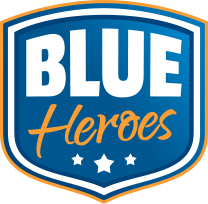Biological Therapy
Information in this fact sheet is meant to assist you in making decisions about your treatment. Always make medication decisions in consultation with your healthcare team.
What are biological therapies used for?
Biological therapies (sometimes called immunotherapy, biotherapy or biological response modifier therapy) use the body's immune system to fight cancer or to lessen the side effects that may be caused by some cancer treatments.
Biological therapies can have different names according to how they work. Some of the main types of biological therapies used to treat cancer are monoclonal antibodies, cancer growth inhibitors and angiogenesis inhibitors. Research is being undertaken to try to discover whether other types of biological therapy such as vaccines and gene therapy can be used to treat cancer. This type of research is in the very early stages.
Biological therapies include interferons, interleukins, colony-stimulating factors, monoclonal antibodies (MAB), vaccines, gene therapy, and nonspecific immunomodulating agents.
How do biological therapies work?
Biological response modifiers (BRMs) occur naturally in the body and can be produced in the laboratory. BRMs alter the interaction between the body's immune defences and cancer cells to boost, direct, or restore the body's ability to fight the disease.
There are several ways biological therapies work to destroy cancer cells. They can:
- attack the cancer cells by stimulating the body’s defences (immune system)
- attach to particular types of cells (including cancer cells) in the body so that they die
- interrupt the cancer cell’s chemical communication system and affect the cancer’s ability to grow
- stop a tumour from making its own blood supply so it can’t get the oxygen and nutrients it needs.
Some biological therapies will do just one of these things while others may use two or more of these methods to attack the cancer.
What are the common side effects?
Biological therapies can cause a number of side effects, which can vary widely from agent to agent and patient to patient.
Rashes or swelling may develop at the site where the BRMs are injected. Several BRMs, including interferons and interleukins, may cause flu-like symptoms including fever, chills, nausea, vomiting, and appetite loss. Fatigue is another common side effect of some BRMs. Blood pressure may also be affected. The side effects of Interleukin – 2 (IL–2) can often be severe, depending on the dosage given. Patients need to be closely monitored during treatment with high doses of IL–2.
Side effects of Colony Stimulating Factors (CSFs) may include bone pain, fatigue, fever, and appetite loss. The side effects of MABs vary and serious allergic reactions may occur. Cancer vaccines can cause muscle aches and fever.
References
Macmillan 2012. How is cancer treated? Macmillan Cancer Support 1st Oct 2011, viewed 9th July 2013.
Disclaimer
Prostate Cancer Foundation of Australia develops materials based on best available evidence and takes advice from recognised experts in the field in developing such resource; however it cannot guarantee and assumes no legal responsibility for the currency or completeness of the information.


